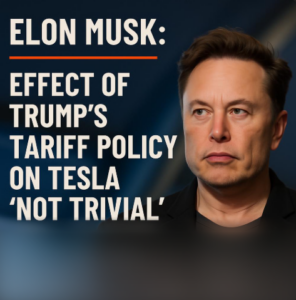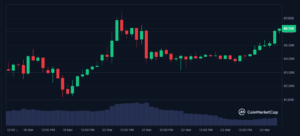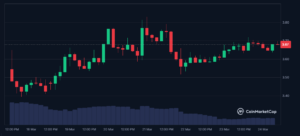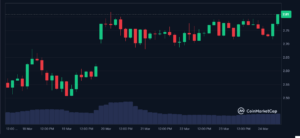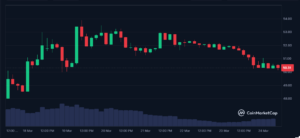The U.S. stock market rose for the second consecutive session, as investors took advantage of buying opportunities after recent market declines.
The Nasdaq and S&P 500, which had been falling for four straight weeks, saw a rebound, signaling potential recovery.
However, economic data and the impact of Trump’s policies continue to influence market sentiment.

■ U.S. Stock Market Gains – Key Index Performance
● As of March 17 (ET), major stock indices saw gains:
• Dow Jones Industrial Average (DJI): +353.44 points (+0.85%) 41,841.63
• S&P 500 (SPX): +36.18 points (+0.64%) 5,675.12
• Nasdaq Composite (IXIC): +54.58 points (+0.31%) 17,808.66
● After four consecutive weeks of declines, the Nasdaq and S&P 500 rebounded as investors sought bargains!
● However, market uncertainty remains:
- Retail sales rose slightly but fell short of expectations → Consumer sentiment remains weak.
- New York State factory activity saw its biggest drop in nearly two years → Economic slowdown concerns.
- Homebuilder sentiment fell to a seven-month low → Higher costs due to import tariffs.
■ Trump’s Economic Policies & Market Uncertainty
● Economic Outlook & Federal Reserve Policy
• Federal Reserve expected to keep interest rates unchanged on
March 20
• Q1 GDP Forecast: -2.1% (Federal Reserve Bank of Atlanta)
• Fed meeting expected to shed light on Trump administration’s economic impact
● Will Trump’s Policies Lead to a Recession?
• U.S. Treasury Secretary Scott Bessent: “There are no guarantees the U.S. will avoid a recession.”
• Massive federal budget cuts & tariff policies → Increasing market uncertainty.
● Weak Retail Sales & Manufacturing Data
• February retail sales showed a slight recovery but missed expectations → Tariffs impacting consumer behavior.
• New York State’s factory activity saw its biggest drop in two years → Weak demand signals.
● Housing Market Challenges
• Homebuilder sentiment hit a 7-month low in March
• Higher construction costs due to tariffs on imported materials
■ Stocks That Gained vs. Stocks That Declined
● Gaining Stocks (Tech & AI Leading the Rally)
• Quantum Computing Stocks Surged:
D-Wave Quantum (QBTS.N): +10.15%
Quantum Corp (QMCO.O): +40.09%
• Nvidia (NVDA.O) AI Conference Boosted AI-related Stocks
• Intel (INTC.O): +6.82% (New CEO Lip-Bu Tan expected to overhaul AI & semiconductor strategy)
● Declining Stocks (Consumer & EV Stocks Under Pressure)
• Tesla (TSLA.O): -4.79%
Mizuho Securities cut its price target from $515 to $430
Stock down 41% year-to-date
• Consumer discretionary stocks lagged due to weak consumer confidence
■ Conclusion: Where is the Market Headed?
• U.S. stock market rebounded after four weeks of decline → Bargain-hunting investors driving gains.
• Uncertainty remains over Trump’s economic policies & potential recession risks.
• AI & quantum computing stocks leading the recovery, while Tesla & consumer sectors struggle.
• Market awaits March 20 Fed meeting for further economic guidance.
§ The upcoming Federal Reserve meeting could be a major turning point for the stock market!


